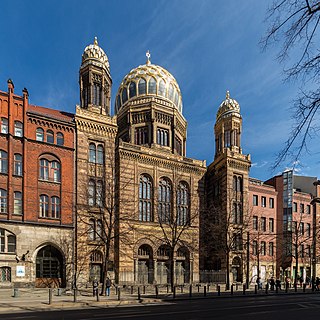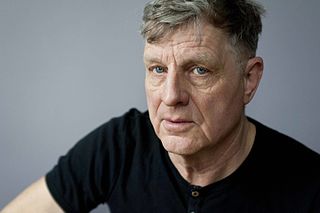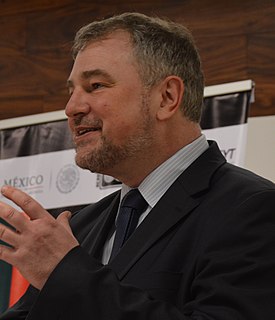Hans Bellmer was a German artist, best known for the life-sized pubescent female dolls he produced in the mid-1930s. Historians of art and photography also consider him a Surrealist photographer.

The Deutscher Werkbund is a German association of artists, architects, designers and industrialists established in 1907. The Werkbund became an important element in the development of modern architecture and industrial design, particularly in the later creation of the Bauhaus school of design. Its initial purpose was to establish a partnership of product manufacturers with design professionals to improve the competitiveness of German companies in global markets. The Werkbund was less an artistic movement than a state-sponsored effort to integrate traditional crafts and industrial mass production techniques, to put Germany on a competitive footing with England and the United States. Its motto Vom Sofakissen zum Städtebau indicates its range of interest.

Hans Philipp August Albers was a German actor and singer. He was the biggest male movie star in Germany between 1930 and 1960 and one of the most popular German actors of the twentieth century.

The New Synagogue on Oranienburger Straße in Berlin is a mid-19th century synagogue built as the main place of worship for Berlin's Jewish community, succeeding the Old Synagogue which the community outgrew. Because of its eastern Moorish style and resemblance to the Alhambra, the New Synagogue is an important architectural monument in Germany.
The November Group was a group of German expressionist artists and architects. Formed on 3 December 1918, they took their name from the month of the German Revolution.

Hans Neuenfels was a German writer, poet, film producer, librettist, theatre director, opera director and theatre manager. As a director, he first focused on drama, staged at prominent houses such as the Vienna Burgtheater, and became a leading exponent of German Regietheater. From 1974, he turned to opera, looking for "the subliminal of the music and the interlinear of the texts", for "surprisingly new, sometimes even disturbingly ambivalent perspectives on the works". Some of his opera productions caused controversies, such as Verdi's Aida at the Oper Frankfurt in 1980 where he staged the title character as a contemporary cleaning lady. In Mozart's Idomeneo at the Deutsche Oper Berlin in 2006, he was accused of offending Islam, and in Wagner's Lohengrin at the Bayreuth Festival in 2010, he dressed the choir as laboratory rats. He received the Der Faust award for his life's achievements in 2016, and is regarded as one of the most inventive directors of his generation.

Carl August Hugo Froelich was a German film pioneer and film director. He was born and died in Berlin.

Rainer Fetting is a German painter and sculptor.
Hans Erich Slany was a German designer considered by many to have been the first industrial designer to design plastic housings for power tools. Slany is also thought of as one of the icons of design in Germany. He founded TEAMS Design GmbH, was a Professor of Industrial Design (ID) for more than 20 years and helped found the Verband Deutscher Industrie Designer e. V. in 1959. He then helped the VDID with their entry into the International Council of Societies of Industrial Design (ICSID).

Karl-Heinz Kurras was a West German police inspector, known primarily for fatally shooting unarmed student Benno Ohnesorg in the back of the head during a demonstration on June 2, 1967, outside Deutsche Oper against the state visit of Mohammad Reza Pahlavi, the last Shah of Iran. Kurras was acquitted of any wrongdoing in a series of controversial trials, due to which he became a prominent hate figure of the left-wing German student movement of the 1960s as well as the German New Left. They suspected that Kurras was under protection from many right-wing figures in the West German police and justice system and who were resentful towards the left-wing students. The incident is considered pivotal for the rise of left-wing terrorism in West Germany during the 1970s, culminating with the Movement 2 June and the Red Army Faction.

The Ministry of National Defense was the chief administrative arm of the East German National People's Army. The MND was modeled on the Ministry of Defense of the Soviet Union. The headquarters of the Ministry was in Strausberg near East Berlin. The Guard Regiment Hugo Eberlein provided security and guard services to the Ministry. The Ministry also had its own publishing house, Military publishing house of the German Democratic Republic.

Frank Rocholl is a German graphic designer, art director and typeface designer. He is also creative director and co-editor of the international fashion publication Mirage Magazine.

Waldfriedhof Zehlendorf is a cemetery located in Berlin's Nikolassee district. The cemetery occupies an area of 376,975 m2. An additional Italian war cemetery was created there in 1953. A number of notable people of Berlin are buried at the cemetery; some have a grave of honor. In particular, all of Berlin's deceased post-war mayors are buried here.

Stefan Rinke is a German historian and specialist in Latin American history. Since 2005 he has been professor at the Institute of Latin American Studies and at the Friedrich-Meinecke-Institut at Freie Universität Berlin.

Sibylle Boden-Gerstner was a German costume designer, artist and fashion writer. In 1956 she founded the East German arts and fashion magazine which bore her name, Sibylle, working with the publication as its editor in chief till 1961.

Richard Georg Willi Puhlmann, was a German fashion photographer, who worked with the top models, stylists and designers in the fashion industry. He was killed when TWA Flight 800 came down shortly after takeoff in 1996.
Marco Arturo Marelli is a Swiss set designer and stage director who has worked at European opera houses for opera and ballet. He designed sets for ballets by John Neumeier, and for premieres of the operas Thomas Chatterton by Matthias Pintscher at the Semperoper in Dresden (1998) and Medea by Aribert Reimann at the Vienna State Opera (2010).
Ruth Hesse is a German dramatic mezzo-soprano. She was a member of the Deutsche Oper Berlin from 1962 to 1995, and appeared internationally, including the Bayreuth Festival and the Salzburg Festival. She appeared regularly at the Vienna State Opera from 1965 to 1988, and was appointed an Austrian Kammersängerin in 1982. In Berlin, she took part in the world premiere of Henze's Der junge Lord.

Ita Maximowna was a Russian-German scenic designer, costume designer and illustrator. She was one of the first women in the professions in Germany who worked internationally. Trained as a painter, she came to the theatre late, after World War II in Berlin, and became a scenic designer first in theatres of the city, then internationally both for plays and opera, and in collaboration with directors such as a Günther Rennert and conductors such as Herbert von Karajan.














